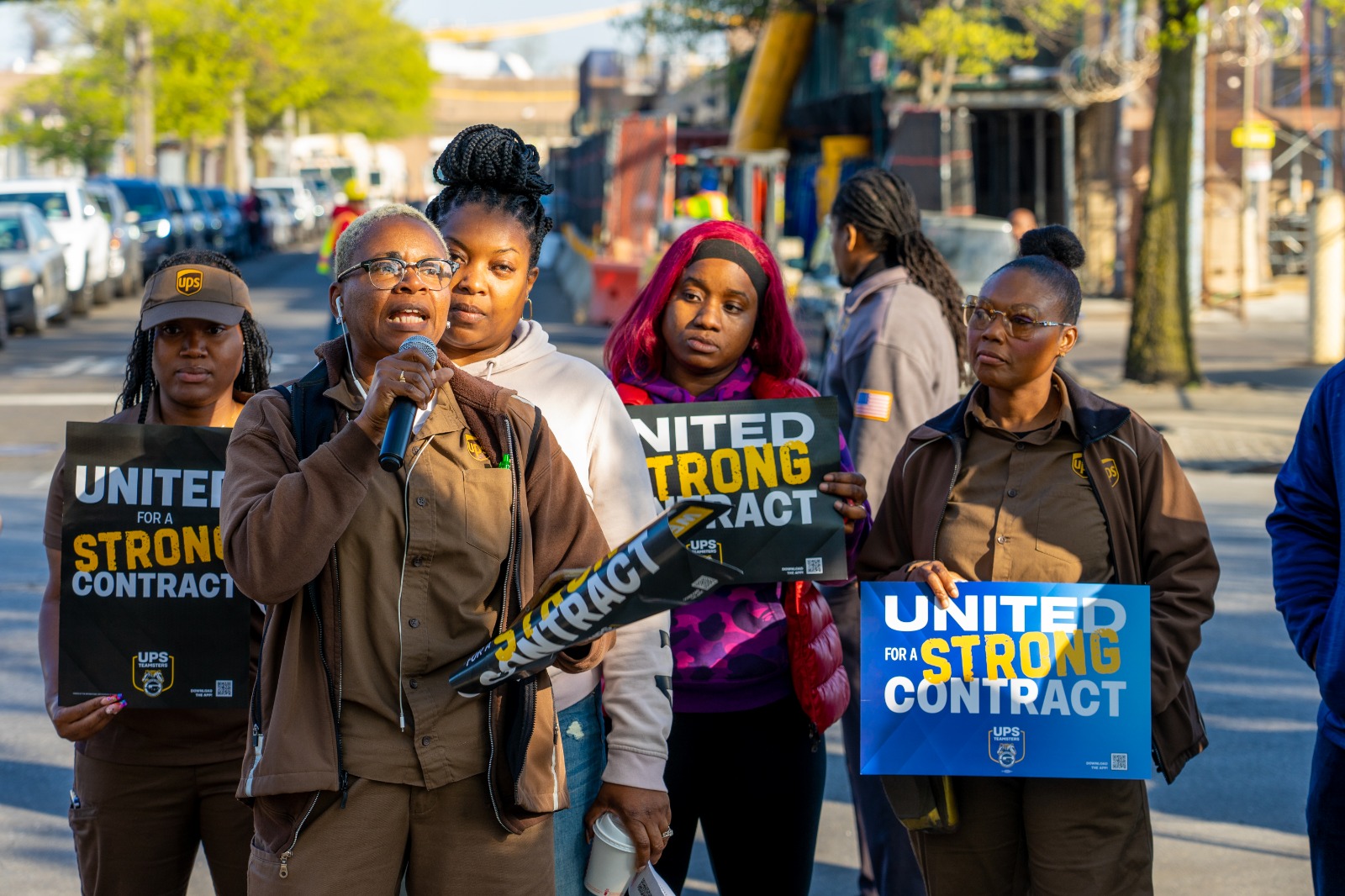This practical, “how-to” guide provides resources to win health and safety improvements through collective bargaining and strengthen the union in the process. Union leaders, activists and negotiating committees who bargain with employers over health and safety issues can use this guide to build a contract campaign around health and safety, draft new contract language, or bargain on health and safety between contracts. The heart of this online resource is an extensive collection of sample contract language, taken from actual collective bargaining agreements.
Unions are still workers’ best protection against health and safety hazards on the job. By using a contract campaign framework to negotiate over health and safety, unions may be able to win measures that are more protective than current regulations, and have a tool to build the union at the same time.
Three sections provide tools for before, during, and after bargaining:
Describes how to prepare for bargaining on health and safety using a contract campaign framework. Includes how to think of health and safety as an organizing tool for the union, how to find out about existing hazards and involve members in a meaningful way, tips for building a contract campaign for health and safety, and setting your health and safety priorities.
Provides sample contract language to address a variety of hazards and protect workers. This section is divided into two parts. Most excerpts are drawn from actual union contracts, but a few are “model” language suggested by union leaders, researchers and educators.
Provides tools for "continuous bargaining" between contracts, including how to use worker health and safety committees, OSHA complaints, contract enforcement, and communication/education strategies.
Why Bargain for Health and Safety?
Workplace health and safety remains a top priority for workers and unions.
Job-related injuries, illnesses, and deaths continue at high levels. Over 5,000 workers were killed on the job in the United States in 2021, and an estimated 120,000 died from occupational diseases. Black and Latino workers are at increased risk, as are older workers, women, and minors.
It’s the law! Employers are required to bargain over health and safety.
Two events were instrumental in the growth of health and safety as a collective bargaining issue: the 1966 National Labor Relations Board (NLRB) decision that health and safety is a mandatory subject of collective bargaining, and the passage of the Occupational Safety and Health Act in 1970, which mandates that all workplaces be safe and healthful environments, and sets up agencies and procedures for researching, promulgating, and enforcing workplace standards.
Protection from government regulations alone is inadequate.
Although government regulations have significantly decreased workplace injuries and deaths, the AFL-CIO suggests that OSHA has been limited due to the agency’s weak enforcement authority and lack of resources.
Not all workers are covered – Federal OSHA does not cover public employees, so public employees in the 28 states without their own state OSHA programs are not protected by OSHA at all.
New hazards emerge.
Significant new hazards have emerged, and OSHA has not always kept pace with them. Increasing violence in the workplace, infectious diseases including COVID-19, and climate-related disasters and weather hazards are but a few examples. The accelerating introduction of new technology and increased demands for speed and productivity are other developments that can have serious health and safety implications.
Get in Touch
Have contract language examples to share?
Questions about bargaining for safety?
Interested in training to integrate health and safety in contract campaigns?
About this Guide
This 2024 online edition builds on LOHP’s previous work compiling contract language examples to address health and safety. LOHP’s original handbook, Workplace Health and Safety–A Guide to Collective Bargaining, was published in 1980 and subsequently updated in 2000. The 2024 edition incorporates new issues that have emerged, integrates the framework of building a contract campaign, and includes a new section on continuous bargaining.
Like the previous editions, this guide is dedicated to the memory of former LOHP Director Paul Chown, the author of the original book. Paul devoted his entire life to the labor movement as an organizer, negotiator, union official, and director of both LOHP and the Center for Labor Research and Education at UC Berkeley.
Acknowledgements
The 2024 online guide was developed by:
Writing, Research and Editing
Tenaya Lafore
Alejandra Domenzain
Laura Stock
Suzanne Teran
Other LOHP Contributors
Hestia Rojas
Web Design, Layout, and Production
Gigi Huang
Bob Spies, Flying Seal Systems
Suzanne Teran
Bryceida Valencia
Photo credits
- Preparing for Bargaining
International Longshore & Warehouse Union (ILWU)
- Bargaining for Health and Safety
Josh Cob
- Bargaining Between Contracts
Teamsters for a Democratic Union
- Stories from the Front Lines
With gratitude to all who developed and contributed to the Collective Bargaining for Health and Safety: A Guide for Unions (2000 edition), on which this update is based. Some sections in this guide were also adapted from LOHP’s Tools of The Trade: A Health and Safety Guidebook for Action.
Contributors
We are grateful to the following people for their generous assistance with the 2024 update:
Writing and editing sections of the guide:
Jonathan Salazar
UCLA Labor Occupational Safety and Health Program (UCLA-LOSH)
Sara Kalantar
LOHP MPH student intern
Nancy Lessin
United Steelworkers - Tony Mazzocchi Center, retired
Steve Sallman
United Steelworkers - Tony Mazzocchi Center
Bargaining language, stories, and other contributions:
Peter Dooley
National Council for Occupational Safety and Health (NCOSH)
Andrew Gross Gaitan
Service Employees International Union-United Service Workers West (SEIU-USWW)
Jim Howe
Safety Solutions
Katherine Hughes
Service Employees International Union (SEIU) Nurse Alliance of California
Laura Kurre
California Teachers Association (CTA)
Paul Landsbergis
Center for Social Epidemiology
Steve Moosher
Retail, Wholesale and Department Store Union (RWDSU)
Sarah Miles
The United Food and Commercial Workers (UFCW)
Serena Rice
University of Massachusetts Lowell
Kevin Riley
UCLA Labor Occupational Safety and Health Program (UCLA-LOSH)
Eunice Salcedo
National Education Association (NEA)
Mitch Steiger
California Federation of Teachers (CFT)
Lorraine Thiebaud
Staff and Per Diem Nurses, Service Employees International Union (SEIU) 1021








